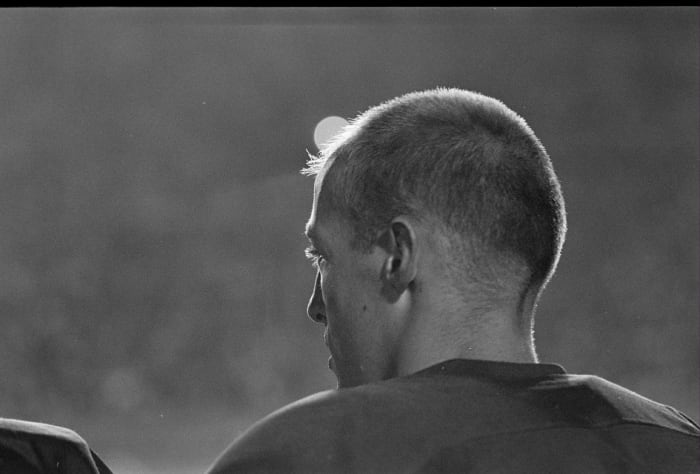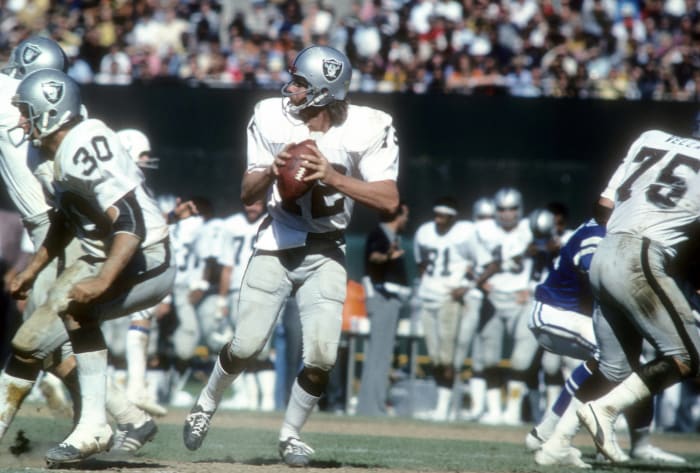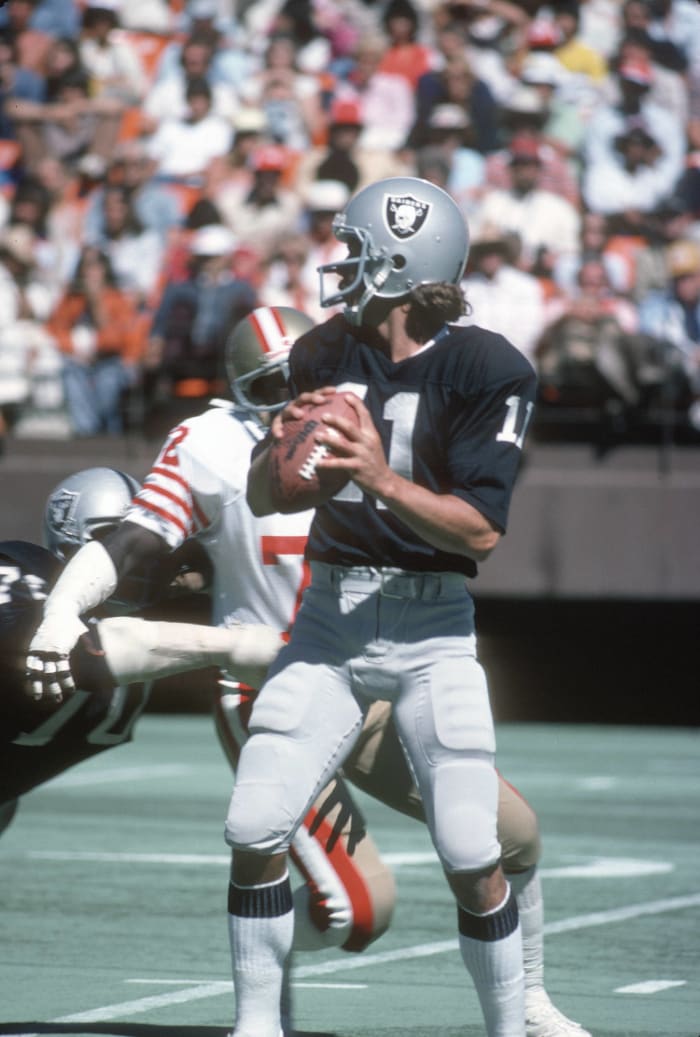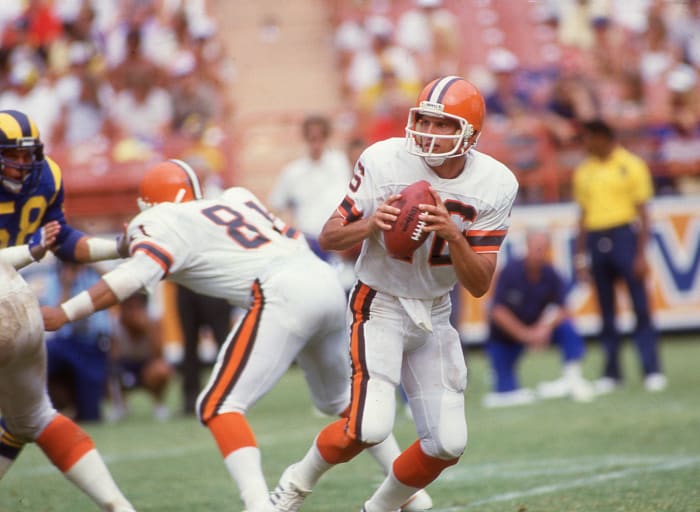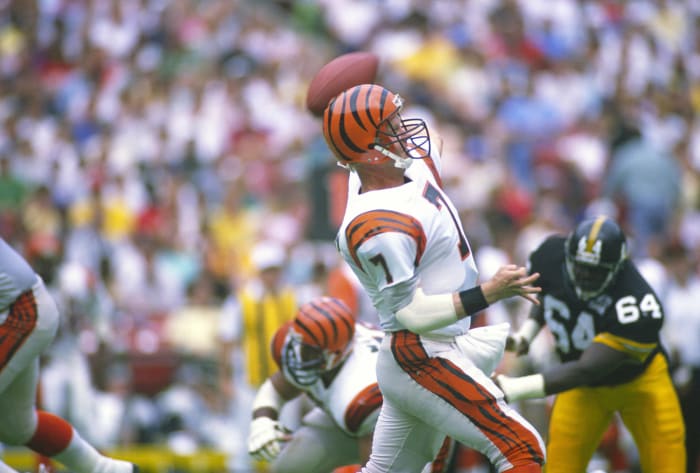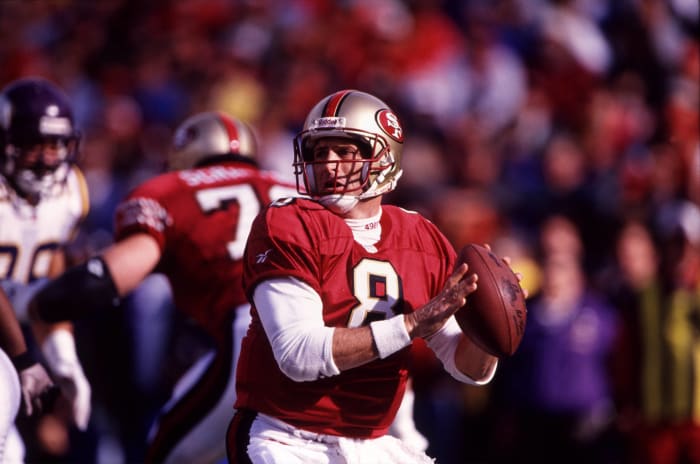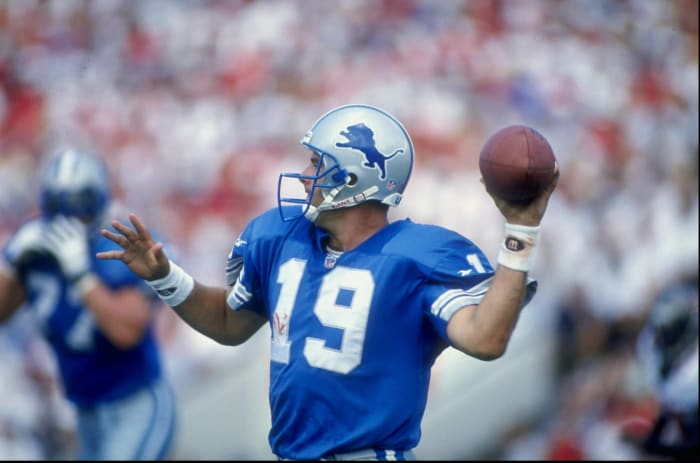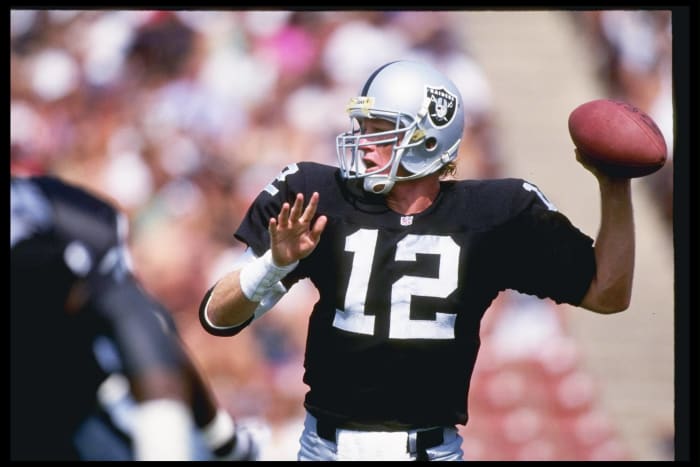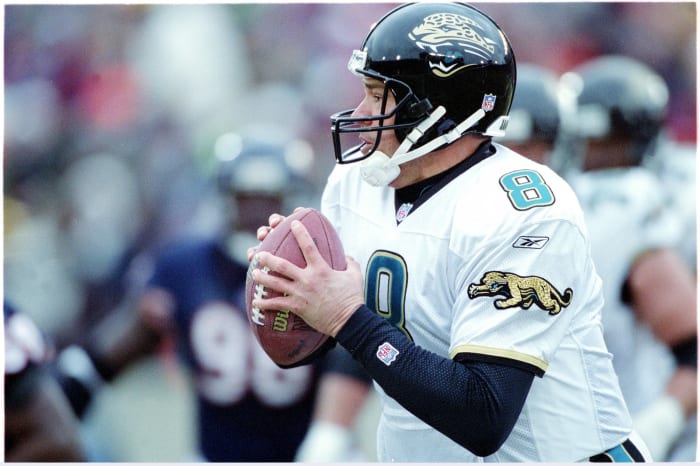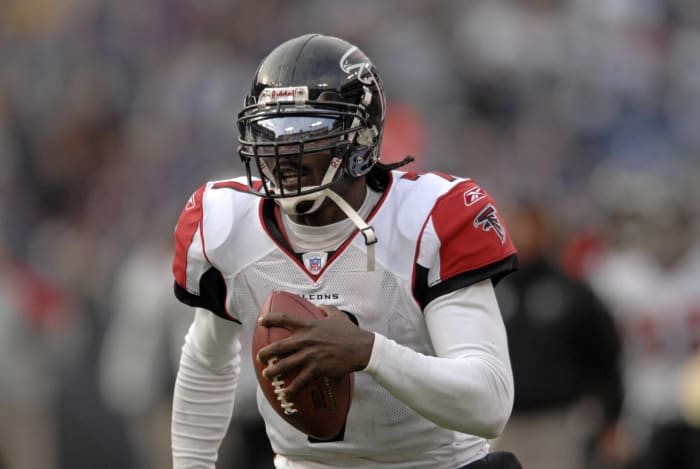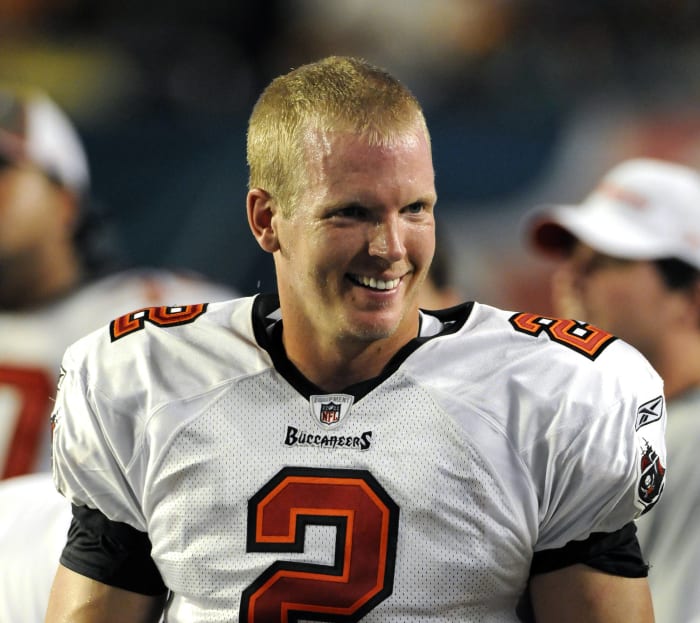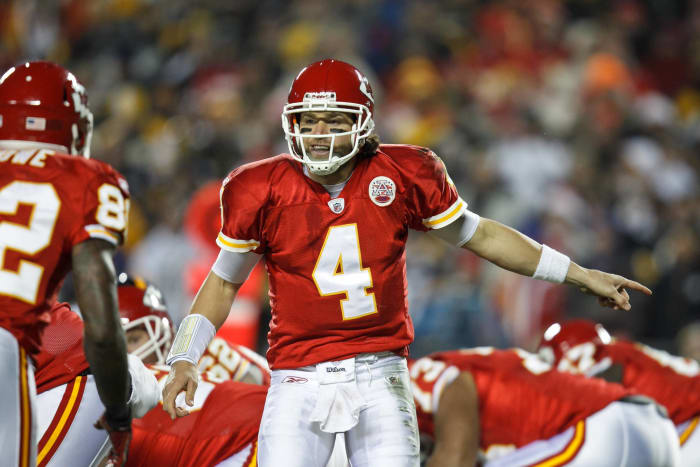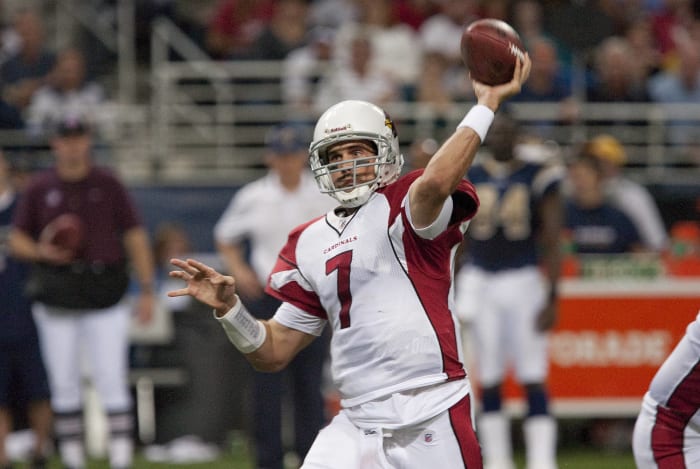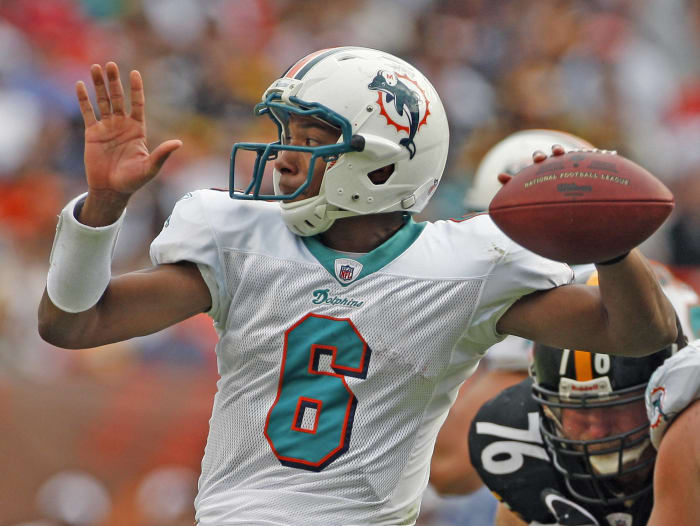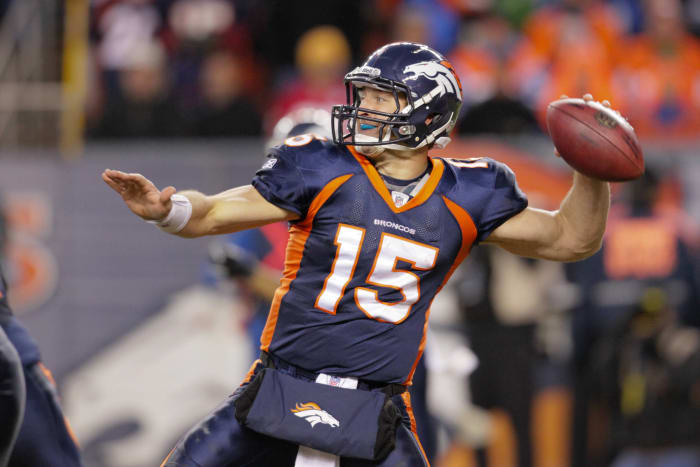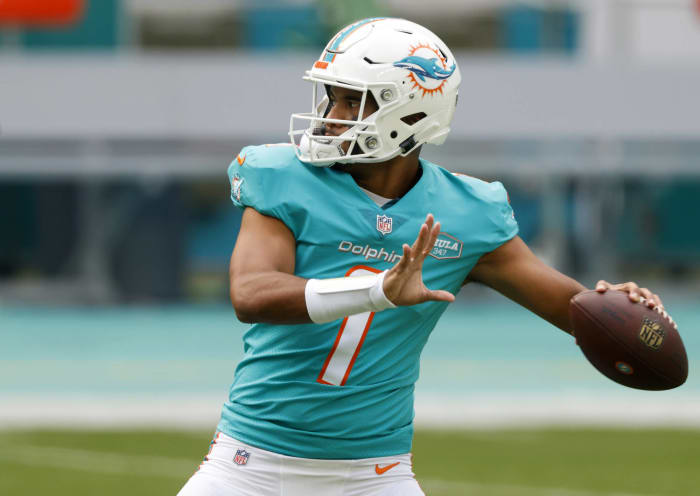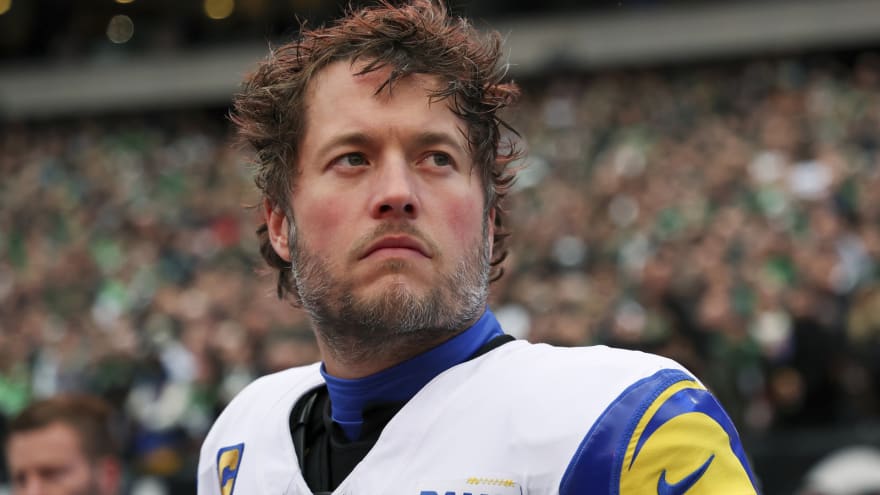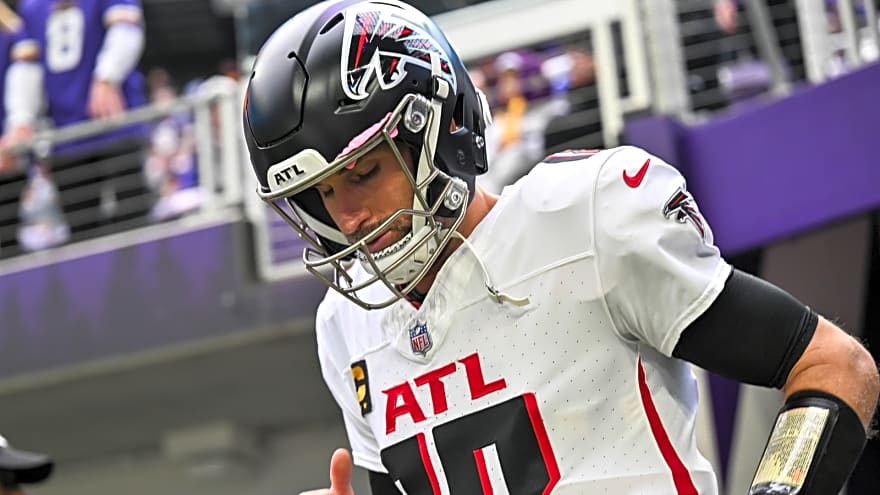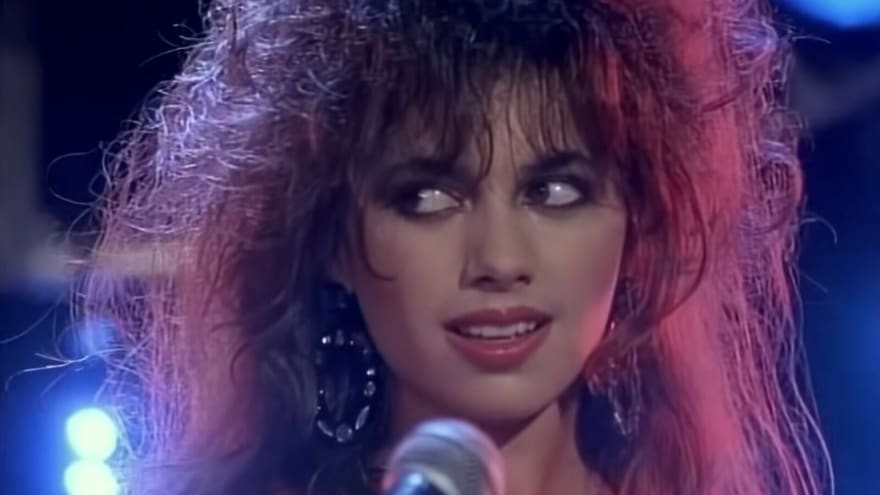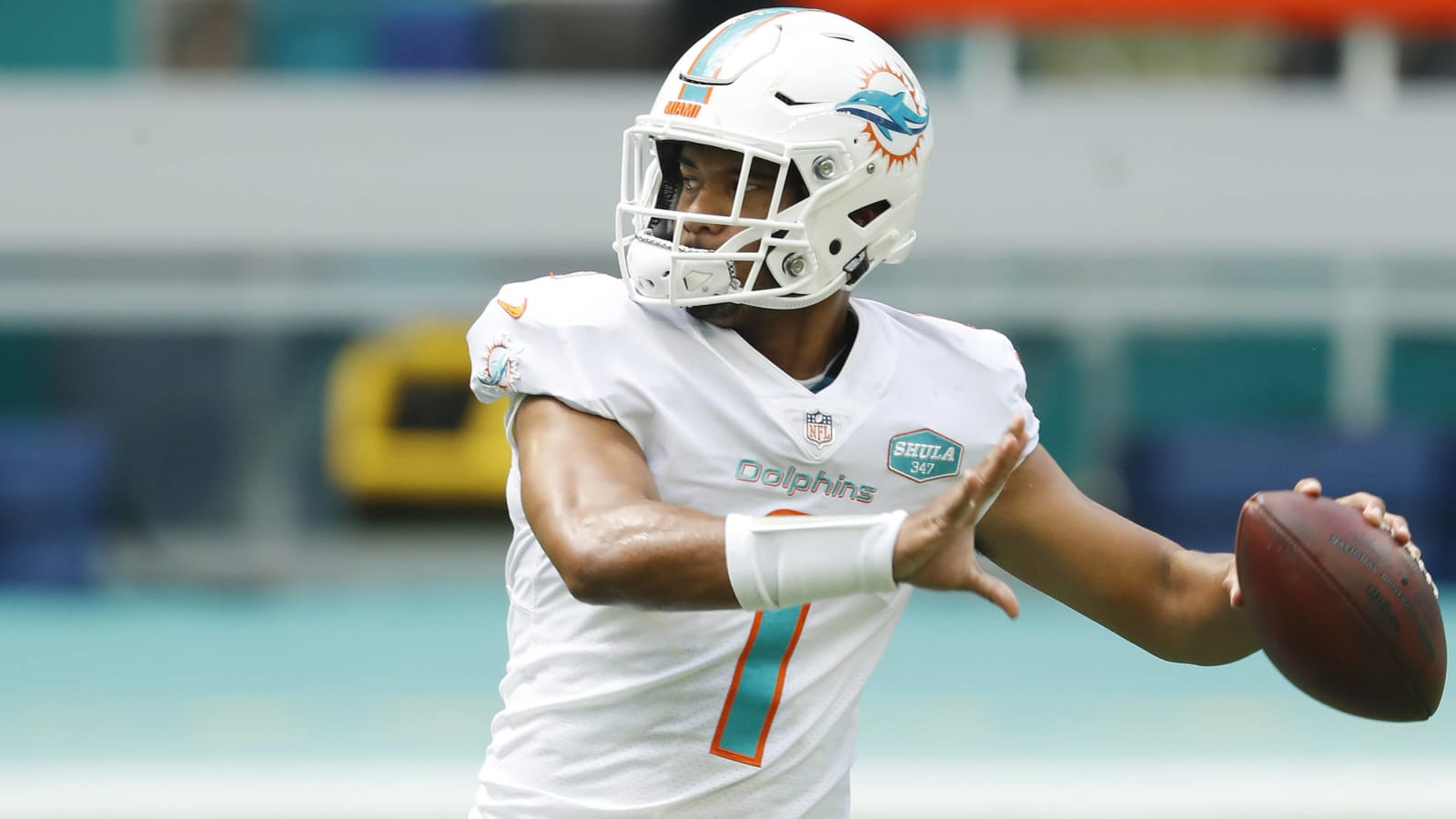
The most notable lefty NFL quarterbacks
With noted southpaw quarterback Tua Tagovailoa now the starting QB for the Miami Dolphins, the NFL finally ended its left-handed QB drought. Prior to Tagovailoa, no lefty QB had thrown a pass in a regular-season NFL game since 2015.
And with that trend seemingly close to ending, now would be a good time to take a look back at left-handed quarterbacks. Only 32 southpaws have played quarterback in NFL history. Here are the most notable ones:
More must-reads:
- NFL first-round mock: Alabama's Tua Tagovailoa to ...
- Analyst makes prediction about Saints' alleged QB competition
- The 'NFL QBs with the most rushing touchdowns in a single season' quiz
Breaking News
Trending News
Customize Your Newsletter
 +
+
Get the latest news and rumors, customized to your favorite sports and teams. Emailed daily. Always free!
TODAY'S BEST

Jalen Ramsey posts string of tweets amid rumors; Mike McDaniel, Sean McVay speak out
It’s only been two days since we talked about the Dolphins–Jalen Ramsey trade situation, but what a two days it has been. We insinuated in our most recent post that a trade could be on hold until after June 1 for cap reasons, and a lot of signs appear to be pointing in that direction. The reasoning for this is fairly clear. Were the Dolphins to trade their star cornerback before June 1, the team would eat $25.21M in dead money with Ramsey still taking up $8.55M of cap space. If the team makes the trade after June 1, that dead-money figure reduces to $6.75M with the team also getting $9.92M of salary-cap relief. As if to mark June 1 as a finish line, Ramsey simply posted, “5…” on his X account on Tuesday, likely indicating the number of days until Miami will be willing to trade him. In a string of posts Wednesday, Ramsey reiterated that targeted date, telling his followers to “finish the week strong.” He also indicated that things have “ended” and that “a new chapter awaits.” Head coaches of two teams offered quotes on the situation, as well. Miami’s Mike McDaniel made it clear Wednesday that his focus is on the players who are at the team’s facilities — Ramsey doesn’t appear to have any intentions of attending any offseason activities with the Dolphins. McDaniel said that he’s “very excited to coach a team” and that he’s “just worried about the players on the field today,” per Barry Jackson of the Miami Herald. The Rams have been heavily linked as a team that could reunite with Ramsey, and head coach Sean McVay was the other coach to comment on the situation. According to ESPN’s Sarah Barshop, McVay told reporters that “there hasn’t been any meaningful, tangible dialogue as of late…but that can always change pretty quickly.” “Quickly” could end up being as soon as June 1. In a mailbag Q A, Albert Breer of Sports Illustrated addressed what a realistic return could look like in a Ramsey trade. Miami has plenty of incentive to get Ramsey’s salary off their books, but that probably doesn’t mean they’ll be willing to discount him too much. While teams acquiring the veteran defender will theoretically be getting three years of control, those years come with cash payouts of $21M in 2026, $21.7M in 2027 and $24M in 2028. In those final three years, Ramsey will be playing at 32, 33 and 34 years old. Breer points out that, should Ramsey’s age finally catch up to him and affect his abilities to play cornerback, there are people who believe he can transition into a top-tier safety. Even the highest-paid safeties, though, aren’t averaging $21.7M and $24M per year today, and the highest-paid safety over 30 years old is only averaging $6.5MM per season. Breer speculates that this could mean that we’ll see whichever team acquires him cut the veteran after his first season with the team in order to get out of his current contract and potentially work toward a newer, cheaper one.

NHL's divisional playoff format stinks – and it's time to move on
The NHL may have an entertainment problem on its hands right now. No, it’s not because of the inconsistent officiating seen in the playoffs year after year. It’s not because said inconsistent officiating encourages cheap shots and little disruptions. No, it’s not even because of five-minute video reviews over marginal details. It’s because of the series mismatches we’ve been witnessing in the later rounds of the Stanley Cup playoffs. It feels like far too often now, the playoffs unfold as such. The first round features several exciting matchups between teams that have already played multiple times that season. The second round sometimes features the best of those divisions but also acts as a course correction from any upsets that occurred in the first round. The third round then acts as a reminder of which division was the better of the two. And then comes the Stanley Cup Final, which usually ends up being a battle between two of the better teams in the league (although 2021 showed us that that isn’t always the case). Just look at this year’s playoffs so far. The first round gave use a few exciting series, highlighted by two fantastic Game 7s between the Dallas Stars and Colorado Avalanche and the Winnipeg Jets and St. Louis Blues. But then the second round featured three series that saw a team go up 3-1 in their respective series, with all three closing them out by Game 6. And now in the Conference Finals, it feels even more one-sided. The Florida Panthers took a 3-0 series lead in the East, and while the Carolina Hurricanes started a comeback with a 3-0 win in Game 4, it feels inevitable that Florida will advance. In the West, the Edmonton Oilers now hold a 3-1 series lead, and outside of the third period of Game 1 in which they allowed five goals, they’ve outscored the Stars 16-3. Both series feel very lopsided, and it’s a clear representation of the disparity between the two divisions in each conference, especially in the Eastern Conference. The Hurricanes are the best representative the Metropolitan Division has, and yet it feels like any of the Florida Panthers, Toronto Maple Leafs or Tampa Bay Lightning could win against them with ease right now. There’s a bit more of a contest in the West, but with how the Oilers are playing right now, you have to wonder how the Vegas Golden Knights and Los Angeles Kings may have done against the Stars as well. This isn’t the only recent example either. 2024 did see slightly closer Conference Finals matchups, but after the Stars and Rangers went up 2-1, the Oilers and Panthers took over those series. 2023 was even worse, with both series seeing the Panthers and Golden Knights go up 3-0 (not to mention that the Cup Final wasn’t close either). Even in 2022, the Avalanche swept the Oilers quite easily. They’ve all had their moments, but you really have to think to remember the last time the Conference Finals has given us a classic series to remember. So as the entertainment product this late in the season dwindles, as does the viewership (particularly in the United States), why does the NHL choose to not make a change to the playoff format? When the NHL first announced the realignment and the switch to a divisional playoff format for the 2013-14 season, commissioner Gary Bettman had plenty of reasons why he liked the decision. It would create rivalries out of consistent matchups. More regional matchups early on would benefit the teams. And let’s be real, the NHL saw the success of the bracket challenge with March Madness and wanted to replicate that with a more set format. (They did have it before the realignment, but reseeding meant that one wrong first-round series pick would result in your second-round predictions ruined.) And in the league’s defense, he wasn’t wrong out of the gate. Some teams faced off consistently over the next few years, highlighted by the three-year showdown between Sidney Crosby’s Pittsburgh Penguins and Alex Ovechkin’s Washington Capitals from 2016 to 2018. It created benchmarks for the other teams in the division and conference, knowing who they were going to likely face at certain points in the playoffs. On top of that, the Conference Finals for the first few seasons were also quite good. 2014 saw what was basically a second Stanley Cup Final between the Kings and Blackhawks in the West, while the East saw the underdog story of Dustin Tokarski trying to lift the Canadiens over the Rangers in the wake of Carey Price’s injury. 2015 delivered two great seven-game series between the Rangers and Lightning and the Ducks and Blackhawks. Even 2016 and 2018 gave us the tail end of the Penguins’ and Capitals’ contention windows taking on the dawn of the Lightning’s. But since then, the product feels a bit weakened come the third round, and a lot of that is due to the disparity of the divisions. The West has traded representatives between the two divisions (albeit quite pronouncedly in a good chunk of the Conference Finals series), but the East will likely have its conference represented by the Atlantic Division for the seventh straight season. Heck, even the one year where crossover was possible in the temporary 2020-21 divisions, two traditional Atlantic teams met in the Final in the Lightning and Canadiens. On top of that, the consistent matchups haven’t created rivalries to the extent that the NHL was hoping for. Sure, a series between the Bruins and Leafs gets heated, but it’s still been very one-sided in terms of the result. Los Angeles has never really felt like a threat to McDavid and Draisaitl’s dominance in its annual meeting with the Oilers. Even the Battle of Florida has only gone past five games once since in the four meetings we’ve had in the past five seasons. It’s never been clearer that the divisional playoff format needs to go, especially after what we’ve seen this season. A quick dive into what the traditional 1-8 format would have looked like, and it’s possible the later rounds would have been more entertaining. In the West, Winnipeg (1) vs. St. Louis (8) and Vegas (2) vs. Minnesota (7) remain the same, but we’d get a switch-up of the other two, including our current West Final in Dallas (3) vs. Edmonton (6), as well as a slight breath of fresh air in Los Angeles (4) vs. Colorado (5). Sure, the Kings would have to deal with a two-headed monster in Nathan MacKinnon and Cale Makar, but they'd take anything new over Edmonton at this point. Assuming the series we have seen go as they already have or will go, we’d get a Canadian matchup between Winnipeg (1) and Edmonton (6) (not to mention the best player in the world against the best goalie), while Vegas (2) would get one of Los Angeles (4) or Colorado (5). Sure, we still get some similar matchups out of this, but even just seeing them at different stages of the playoffs feels refreshing. In the East, the difference in quality is a bit more staggering. The first round would still feature Washington (1) vs. Montreal (8), but then Toronto (2) vs. New Jersey (7), Tampa Bay (3) vs. Ottawa (6) and our current East Final matchup, Carolina (4) vs. Florida (5). Based on what we’re seeing from the latter series, this would have been a more fitting first-round matchup, no? Once again, let’s assume no upsets happen and Toronto and Tampa would have come out favorably in their series, while Washington and Florida see theirs unfold the way they did/will. Now the second round features Washington (1) vs. Florida (5) and Toronto (2) vs. Tampa Bay (3). Florida probably still ends up in the East Final, but now we get a likely excellent series between Toronto and Tampa, and regardless of the result there, it would make for a much more interesting result against Florida than Carolina has. The switch from divisional to conference playoff matchups won’t be a changeup 100% of the time either. 2024’s first round in the East would have been the exact same, with the only difference being that the Rangers and Bruins, and Hurricanes and Panthers would have been second-round opponents. What it does do is make the matchups feel more organic and related to the teams’ performances in the regular season and not based on which divisions they’re in. If a potential Conference Final happens in the second round because another team finished with a higher seed than both of those teams, then that’s on them for not performing better in the regular season. But if they’re doomed to face in the second round regardless of whether they finish top two in the conference, it doesn’t feel nearly as significant. For some reason, Bettman and the league continue to think that the divisional playoffs work. As recently as the 2025 GM meetings, Bettman has denounced the idea of changing the format, citing that it creates exciting first-round matchups and that the best teams have to play the best teams eventually, so why not in the first round. But again, that’s ignoring the fact that these matchups happened sometimes anyways in the original format. Doesn’t anyone remember when a stacked Atlantic Division in 2012 resulted in a first round matchup between two potential Cup contenders in the Philadelphia Flyers and Pittsburgh Penguins facing off in the first round? And yet, the fact that that wasn’t a guarantee made that series all the more exciting. The fan outcry for this format has been quite consistent over the years, whether it’s Leafs fans annoyed that with finishing in the top five and yet facing another top-five team in the first round, Kings fans sick of playing the Oilers every year or even hockey fans in general getting annoyed with the Hurricanes or Rangers dominating their own division just to barely stand a chance against whatever team the Atlantic spits out. But that outcry feels even stronger in the past few seasons, and it’s clear a change needs to be made. The NHL is trying its hardest to force exciting matchups when all that does is lose the magic of those matchups, and as recent seasons have shown us, it only spoils the product as the playoffs continue.

Suns Kevin Durant responds to trade rumors on social media
Rumors have flooded social media regarding the status of Phoenix Suns Kevin Durant. The 15-time All-Star is all but confirmed to be traded this summer, the detitanation is unknown, leading to fans theorizing on Durant’s next team. A fan responded to Evan Sidey’s post on X explaining ESPN’s Shams Charania report that Durant and the San Antonio Spurs have mutual interest. The fan questioned the former MVP’s legacy, who is likely to be on his fifth different franchise in his career. Durant would swiftly respond. Durant’s response on X: Durant didn’t take to the criticism kindly, responding within 90 minutes. The 36-year-old’s resume speaks for itself, a former MVP that is a two-time champion and two-time NBA Finals MVP. He is likely one of the greatest scoring forwards of all time. However, his decision back in 2016 to join the Golden State Warriors continue to haunt fans and him on X to question his legacy. Regardless of the validity of the fan’s post or Durant’s response, replying to a fan questioning your legacy while in trade rumors has to have Suns fans putting their face in their hands. It is hard to look at Durant’s time in the Valley as anything but a failure, one playoff series win and zero playoff wins in the past two seasons. The haul for the eventually Durant trade will make or break the franchise’s future as it currently has limited draft picks and cap space to make any moves to improve the roster.

Two Rookies Stand Out To Las Vegas Raiders Superstar EDGE Maxx Crosby
While the tandem of Pete Carroll and John Spytek instantly solved some big problems for the Las Vegas Raiders, there’s still many questions that need answers in Sin City. Two of them in particular are the wide receiver and cornerback rooms. But not to worry – Maxx Crosby sees solutions. For the Raiders, their 2025 NFL Draft class can best be described with one word: upside. From sixth-overall pick Ashton Jeanty to sixth-rounder Tommy Mellott, the Silver and Black welcomed an array of players who have legitimate game-changing potential. Some of them may be well on track to hit that potential, even. At least, that’s what two-time All-Pro edge rusher Maxx Crosby is seeing. “These two dudes have stood out to me, for sure,” Crosby began emptying his notepad with. “On defense, Darien Porter. Big cornerback. I will say, this kid, he’s been a receiver his whole life. That’s the first thing, I’m like, ‘Okay, this kid’s played receiver, is he even..,’ you know? Like, how can you even make that transition? But, you’ve got ball skills and also you’ve seen guys like Richard Sherman, it makes too much sense in Pete’s pedigree to bring in a guy like him. “The second we drafted him, I wanted to know more about him. See what he’s about, see what kind of person he is. Immediately when he got drafted and he got here, I went up to him, and we’ve had a lot of good conversation. And this dude is just a freak of nature. Looking at him on the field, he looks like a starting X receiver. He’s out there 6-4, rangy and running a 4-3. Runs like a gazelle out there, and he’s got ball skills, which is crazy, especially at cornerback, you typically don’t see it–not at that level.” Las Vegas Raiders superstar EDGE Maxx Crosby talks rookies Darien Porter, Dont’e Thornton Crosby’s praise for Darien Porter continued as he noted how the rookie has begun adapting to life in the National Football League. “He’s adapted really fast. He’s a super humble, super quiet kid, he’s showing up to work every day and getting better and he’s being put into positions to go and compete against the best guys on our team.” It’s a good breakdown from Crosby on Porter’s game. And as fate would have it, we at The Raider Ramble released a full film breakdown and scouting report of the Raiders’ [projected] starting cornerback duo, Jakorian Bennett and Darien Porter, earlier in the week. Our video addresses all concerns with the starting unit, giving the strengths and weaknesses of the duo with full film breakdown along the way. You can watch it by clicking here. Or, search manually on YouTube @ Ramble Digital Media. But back to Maxx Crosby and the rookies. While Crosby has also been impressed by what his fellow defensive linemen Tonka Hemmingway and J.J. Pegues have been able to do, he aims to be as un-positionally biased as possible. So, it’s onto the offense. 6-foot-4, 4.3-flat 40-time: A unit It’s easy to be impressed with Ashton Jeanty. The sixth-overall pick who recorded more yards after contact and forced missed tackles in his ’24 campaign than any runner has in a single season throughout college football history, there’s little not to be impressed about. To an extent, the same can be said for second-rounder Jack Bech, a pro-ready receiver with exceptional footwork. Those are the easy answers, as Crosby himself concedes. A 6-foot-5 receiver who runs a 4.3-flat is just as easy of an answer. The difference? Dont’e Thornton wasn’t selected in Day 1, or even Day 2. Thornton had to wait until Day 3 to hear his name get called. And after watching him in-person with the Raiders, Crosby can’t believe that fact. “Dont’e Thornton. The dude we drafted from Tennessee. The big receiver–another freak. 6-4.. I think he might be 6-5.. runs a 4-3, he reminds me of Martavis Bryant. He even looks like him. The way he runs, the way he catches the ball, he just reminds me of Martavis,” Crosby began saying about the Las Vegas Raiders’ fourth-round receiver. “And it’s crazy because, a kid like that who’s, you know, he’s had success in college but hasn’t hit his full potential yet, seeing him on the field and realizing what he can be, from a player perspective you’re like, ‘Holy sh*t, this dude can be something serious.’ But he’s got a long way to go, and that’s the beautiful part about it. He needs a little bit of guidance but he’s a stud. He’s an absolute freak. You watch him on the field and you’re like, ‘Holy f*ck.’ He doesn’t look like everybody else.” It’s really not too hard to see why Crosby is enamored with Dont’e Thornton–more specifically, what he can become. More film for Raider Nation If you aren’t too familiar with Thornton’s game, we’ve got you covered. Just like with Porter – and many other Raiders rookies – we have a full film breakdown and scouting report video on the 22-year-old, which you can watch by clicking here. Or, simply watch the video below: If you enjoyed watching that, be sure to subscribe–there’s more content on the way!

